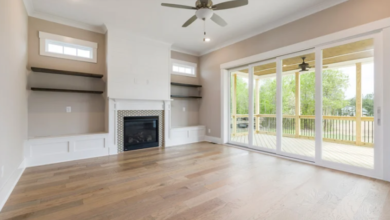How Easy Installation Kits Are Changing Home Heating and Cooling

Why Homeowners Are Considering DIY HVAC Systems
Updating home heating and cooling has never been more accessible. With increasing costs from professional installation services and a heightened demand for flexible scheduling, many homeowners have begun seeking alternative temperature control upgrade approaches. The evolving market now caters to individuals who prefer to handle projects themselves, with manufacturers making self-installation more straightforward than ever. The rise of Mini split AC systems for every space exemplifies this trend, providing all-in-one solutions that drastically cut installation time and effort. Not only does this lower the threshold for upgrading, but it also helps keep projects within budget by reducing or eliminating labor costs, which can otherwise comprise a significant portion of the total investment for new HVAC solutions.
Modern consumers are growing increasingly energy-conscious, actively seeking ways to reduce utility costs while advancing home comfort. DIY installation kits inspired by energy-efficient solutions enable users to make impactful changes with smaller upfront investments. Whether retrofitting a guest bedroom, climate-controlling a garage, or expanding comfort into a previously neglected attic, these kits empower homeowners to take charge in spaces where traditional systems might be impractical or cost-prohibitive. Convenience, ease of use, and substantial performance improvements make DIY HVAC systems an appealing option for first-time do-it-yourselfers and seasoned home improvement enthusiasts.
What Is a DIY Mini Split System?
A DIY mini split system is a compact, versatile way to heat and cool your home without requiring extensive ductwork or specialized installation. The kit typically contains an outdoor condenser unit paired with one or more indoor air handlers, pre-charged refrigerant lines, and all the necessary mounting hardware. Unlike complex traditional HVAC systems, these units are designed to be set up by people with basic mechanical skills and a willingness to follow precise instructions. The beauty of these kits lies in their pre-engineered connections—often with quick-connect fittings for refrigerant—taking the guesswork and risk out of installation for the average homeowner. In many cases, the most technical aspect is drilling a hole through an exterior wall for the refrigerant and power lines, which is explained in detail within the manufacturer’s guide.
This straightforward approach opens up a world of possibilities. From efficiently cooling a sunroom that never matches the rest of the house’s temperature to installing supplementary heating in a basement workshop, the applications are as varied as homeowners’ needs. Because these systems are designed to operate independently of existing ductwork, they are ideal for additions, converted garages, or outbuildings, offering comfort upgrades with minimal disruption. The efficiency and flexibility of DIY mini splits stand in stark contrast to the invasive installations of years past.
See also: Simple Recipes for Homemade Dressings and Sauces
Benefits of DIY Installation Kits
- Pocket-Friendly: Professional HVAC installation can quickly become expensive, often accounting for 30-50% of a complete upgrade. Homeowners can eliminate these labor costs by handling the installation with DIY mini split systems. The only expenditures are the kit and basic tools, making efficient climate control more attainable on modest budgets.
- Time-Saving: Scheduling HVAC professionals can mean waiting days or weeks, especially during peak seasons. DIY installation kits remove this hurdle, allowing you to complete the job at your convenience, sometimes within just a few hours. This empowers homeowners to take action immediately, especially when fast comfort solutions are needed.
- Energy-Efficient: The latest DIY mini split systems use inverter-driven compressors and variable fan speeds. These features translate into lower electricity bills, consistently comfortable rooms, and reduced environmental impact. Research shows that homes with these systems can achieve precise zoning and limit wasteful energy use compared to whole-house systems.
- Flexibility: Kits are available in various sizes and configurations, making it easy to tailor a solution for almost any room or area—a single quiet bedroom, a detached studio, or a multi-zone setup covering multiple areas of a larger home.
Today’s mini split kits incorporate lifestyle-friendly features like programmable thermostats, smartphone connectivity, and compatibility with popular smart home systems. From remote monitoring while on vacation to voice-adjusted temperature control, convenience and technology work together to improve daily comfort.
Are DIY Systems Right for Everybody?
Despite their clear appeal, DIY systems won’t be the perfect fit for every scenario. Installations in larger homes with complex electrical setups, apartments governed by strict codes, or historic properties that require careful preservation should be approached thoughtfully. Some scenarios may still demand the expertise of a licensed professional, particularly where electrical upgrades, complicated drilling, or permit requirements exist. Recognizing your limits is crucial. Before moving forward, it’s wise to research your situation and contact local building authorities or experienced HVAC consultants if there’s any uncertainty.
Making an informed purchase involves more than just picking a model. Comprehensive reviews and expert advice, such as those at Consumer Reports, are invaluable. These guides break down performance expectations, installation advice, and potential pitfalls, helping you avoid costly mistakes. Some cities and counties also provide resources to guide residents through permit procedures or inspection requirements. Checking ahead avoids headaches mid-project and ensures compliance with all relevant codes.
Key Steps for Tackling a DIY Installation
- Check Local Regulations: Every area has its own rules regarding HVAC work. Before unboxing anything, determine if your city or state requires special permits or inspections for self-installed heating or cooling systems. Doing so will keep you compliant and safe from fines or mandated redos down the road.
- Measure Twice, Buy Once: Determining the proper system capacity is essential. Take careful measurements of your intended space, noting ceiling height, insulation quality, and sun exposure. Online calculators or manufacturer-provided sizing charts can help match the unit’s BTU rating to your needs for optimal efficiency.
- Prep the Work Area: Clear excess furniture and debris from the installation site. Ensure exterior walls are free from obstructions, and plan for a level pad for the outdoor unit, plus sturdy mounts for the indoor air handler.
- Follow Instructions Closely: With detailed step-by-step instructions, most homeowners can complete installation with patience and care. Many brands even provide video tutorials to walk through the process. Always read the manual thoroughly and heed all safety tips, especially when lifting heavy units or connecting electrical lines.
- Test and Monitor: Run the system for several cycles. Once setup is complete, check that all modes function correctly, listen for abnormal sounds, and confirm for leaks or wiring issues. Monitoring the first hours of operation closely helps ensure peace of mind and lasting performance.
Inviting a friend or family member to help can streamline the process, especially when maneuvering large outdoor units. With careful planning, nearly anyone can achieve professional-quality results.
Common Myths About Home HVAC Projects
A stubborn myth persists that HVAC work is always too technical or risky for amateurs. While large-scale projects and repairs still call for an expert touch, the nature of pre-packaged DIY mini split kits is changing the game. Manufacturers design these systems with novice installers in mind, emphasizing safety and simplicity at every stage. Real-world examples show average homeowners, armed with just a few tools and internet tutorials, transforming everything from finished basements to detached garages into fully climate-controlled retreats.
However, attention to safety should never be taken lightly. Ensuring circuits are de-energized during installation, using quality wall anchors, and meticulously sealing all holes and connections are non-negotiable steps. Contacting the manufacturer’s support can offer quick answers and added confidence. When in doubt
Energy Efficiency and Modern Features
Today’s focus on sustainability and smart living puts energy efficiency front and center. Many newer mini split systems boast SEER ratings far above legacy units, reflecting meaningful savings on energy bills and reduced environmental impact. According to the U.S. Department of Energy, heating and cooling can account for about half of a typical home’s energy use, making high-efficiency choices especially impactful. High-performance mini splits manage to heat and cool rooms with precision, adjust output automatically to avoid wasted electricity, and often operate far more quietly than older ducted systems.
Another differentiator is the integration of smart technologies. Many systems can now be managed from your smartphone, meaning you can adjust the thermostat from across the country or simply automate daily routines for optimal comfort. Voice control via connected home assistants or programmable timers makes maintaining your ideal temperature as simple as a spoken command or a single tap on your device.
Is a DIY HVAC Upgrade Worth It?
The increasing popularity of DIY mini split systems marks a true shift in how people approach home comfort. These user-friendly kits break down traditional cost and access barriers, empowering homeowners to control their environments directly. For those willing to plan and execute their project carefully, the rewards include savings, convenience, and satisfaction of achieving a comfort upgrade on their terms. Real-life success stories abound, from families cooling a previously stuffy attic hangout to remote workers finally making a garage office habitable year-round.
As manufacturers continue to innovate—with easier installation aids, enhanced energy efficiency, and more intelligent controls—the possibilities for homeowners only grow. A DIY HVAC project can offer immediate benefits and long-term returns with sound research, proper preparation, and realistic expectations. The future of home comfort is not only more efficient, but it’s increasingly within reach for the determined do-it-yourselfer.


